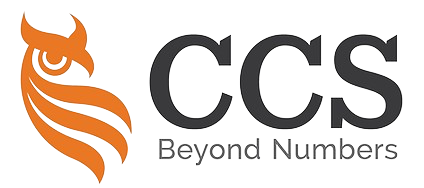Wimpy International Ltd
v
Warland (H.M. Inspector of Taxes)
Associated Restaurants Ltd
v
Warland (H.M. Inspector of Taxes)
Court of Appeal (Civil Division)
England & Wales / 07 December 1988
These were appeals by the two taxpayer companies against the decision of Hoffmann J. ([1987] BTC 591) that the Special Commissioners were entitled to hold that items such as floor and wall tiles, raised floors, staircases and shop fronts were not plant for the purposes of first-year allowances under the Finance Act 1971 section 41 subsec-or-para (1) Finance Act 1971, sec. 41(1).
Wimpy International Ltd. owned and franchised hamburger restaurants while Associated Restaurants Ltd. owned restaurants trading under the name Pizzaland.

Both companies installed shop fronts, wall and floor tiles, a suspended ceiling, mezzanine and raised floors, balustrades, staircases and light fittings.
Those fixtures were designed to attract potential customers and to provide a particular atmosphere which was considered conducive to the enjoyment of the type of meals which they served.
The Special Commissioners, having considered the authorities, determined that the various items were not plant qualifying for first-year allowance under the Finance Act 1971 section 41 subsec-or-para (1) Finance Act 1971, sec. 41(1).
Hoffmann J. dismissed the companies’ appeals except in relation to special lighting which he allowed.
The companies appealed contending that, in relation to anything which formed part of a building in which the business was carried on, the question was:
- whether it was merely part of the building; or
- whether it performed some additional function in relation to the business, such as the provision of a particular atmosphere in a restaurant.
If it did perform such a function then it would be plant even though in ordinary terms it was part of the premises.
Facts

Both Wimpy and Associated Restaurants improved and modernised their restaurants.
They claimed plant and machinery allowances on items such as replacement shop fronts, floor and wall tiles, murals, lighting, water tanks, staircases and raised floors.
The Special Commissioners followed the Scottish and Newcastle decision and allowed such things as murals, decorative brickwork and wall panels, but disallowed the rest.
The companies appealed to the High Court and then the House of Lords.
The Special Commissioners’ decision was upheld apart from one item – the Wimpy light fittings.

In his judgment, Hoffman J said that there were three tests, all of which could be called ‘functional’, to be considered when deciding whether an item was plant.
These tests are:
- Is the item stock in trade?
- Is the item the business premises or part of the business premises (known as ‘the premises test’)?
- Is the item used for carrying on the business (the ‘business use test’)?
The ‘business use test’ is basically the same as the functional test.
The fact that an item passes the business use test is not enough to make it plant.
If the business use is as stock in trade – that is, if the answer to question 1 above is ‘yes’ – then the item is not plant.

Furthermore, it is not sufficient that the asset is used in the business – it must be employed in carrying on the business.
Hoffman J also said that an item used for carrying on the business is not plant if the business use is as the premises (or part of the premises) or place in which the business is conducted – the ‘premises test’.
That is, if the answer to question 2 above is ‘yes’, then the item is not plant.
He made it clear that the degree to which the premises are purpose-built does not matter – they are the premises, and therefore are not the plant.
Hoffman J was not using ‘part of the premises’ here to mean the same as in a determination of whether an item has become part of the realty for the purposes of the law of real property, or a fixture for the purposes of the law of landlord and tenant.

He suggested five general factors to be considered in deciding whether an item is part of the premises:
- Does the item appear visually to retain a separate identity?
- What degree of permanence has it been attached to the building?
- To what extent is the structure complete without it?
- To what extent is it intended to be permanent?
- Is it likely to be replaced within a short period?
These are questions of fact and degree. They are not absolute hurdles, each of which must be surmounted.
Held, dismissing the companies’ Appeal
Something which became part of the premises, instead of merely embellishing them, was not to be regarded as plant, except in the rare cases where the premises themselves were plant such as the dry dock in I.R. Commrs. v. Barclay, Curle & Co. Ltd. TAX (1969) 45 T.C. 221. (Dictum of Lord Lowry in I.R. Commrs. v. Scottish & Newcastle Breweries Ltd.TAX [1982] BTC 187 at p. 195, applied.)

An item’s function had to be considered: if it functioned as premises it was not plant.
Items whose only function was to make the premises attractive to potential customers were plant, while others such as floor tiles, although chosen to be attractive to customers, provided a floor for the premises and were not plant.
The fact that different things might perform the same function of creating atmosphere was not relevant: one thing might function as part of the premises and the other as part of the plant.
It was therefore not sufficient to say that an item was part of the real property.
The question was whether it would be more appropriate to describe it as part of the premises rather than as having retained its own identity.
The Commissioners were justified in coming to the conclusion that the items in dispute were part of the premises.
Per Lloyd L.J.
There was no single test or universal formula which could solve every problem. The court should therefore be reluctant to upset the decision of the Commissioners unless it could be shown not only that they erred in law but also that their error was palpable. Here, all the items in dispute were items which could have fallen on either side of the line and the appeal should be dismissed on the simple ground that the taxpayers had failed to show any error of law on the part of the Commissioners.
What this Means
Although there are instances when it is difficult to differentiate between the Premises Test, the Functional Test, and the Business Ese Test, Hoffmann J. provided a detailed analysis of the tests that have grown over time.
Hoffmann J. highlighted in his analysis in Yarmouth v. France that in the cases of Wimpy International Ltd. v. Warland (Inspector of Taxes); Associated Restaurants Ltd. v. Warland (Inspector of Taxes):
“It is important to notice the various discriminations which are stated or implied in this description.
- First, it excludes anything which is not used for carrying on the business.
- Secondly, it excludes stock-in-trade both expressly and because, although used for the purposes of the business, its use lacks permanence.
- Thirdly, it excludes things which are not ‘apparatus… goods and chattels, fixed or moveable, live or dead’ or not employed in the business. This excludes the premises or place in or upon which the business is conducted.

It will be seen, therefore, that although the three distinctions in Yarmouth v France (1887) each involves a test which can be called functional, they are subtly different from each other.
If the item is neither stock-in-trade nor the premises upon which the business is conducted, the only question is whether it is used for carrying on the business. I shall call this the ‘business use’ test.
However, under the second distinction, an article which passes the ‘business use’ test is excluded if such use is as stock-in-trade.
And under the third distinction, an item used in carrying on the business is excluded if such use is as the premises or place upon which the business is conducted.
The fact that an item may pass the ‘business use’ test but fail what I may call the ‘premises’ test is central to this case.”

Our website's articles, templates, and material are solely for reference. Although we make every effort to keep the information up to date and accurate, we make no representations or warranties of any kind, either express or implied, regarding the website or the information, articles, templates, or related graphics that are contained on the website in terms of its completeness, accuracy, reliability, suitability, or availability. Therefore, any reliance on such information is strictly at your own risk.
Keep in touch with us so that you can receive timely updates |
要获得即时更新,请与我们保持联系
1. Website ✍️ https://www.ccs-co.com/ 2. Telegram ✍️ http://bit.ly/YourAuditor 3. Facebook ✍
- https://www.facebook.com/YourHRAdvisory/?ref=pages_you_manage
- https://www.facebook.com/YourAuditor/?ref=pages_you_manage
4. Blog ✍ https://lnkd.in/e-Pu8_G 5. Google ✍ https://lnkd.in/ehZE6mxy
6. LinkedIn ✍ https://www.linkedin.com/company/74734209/admin/






